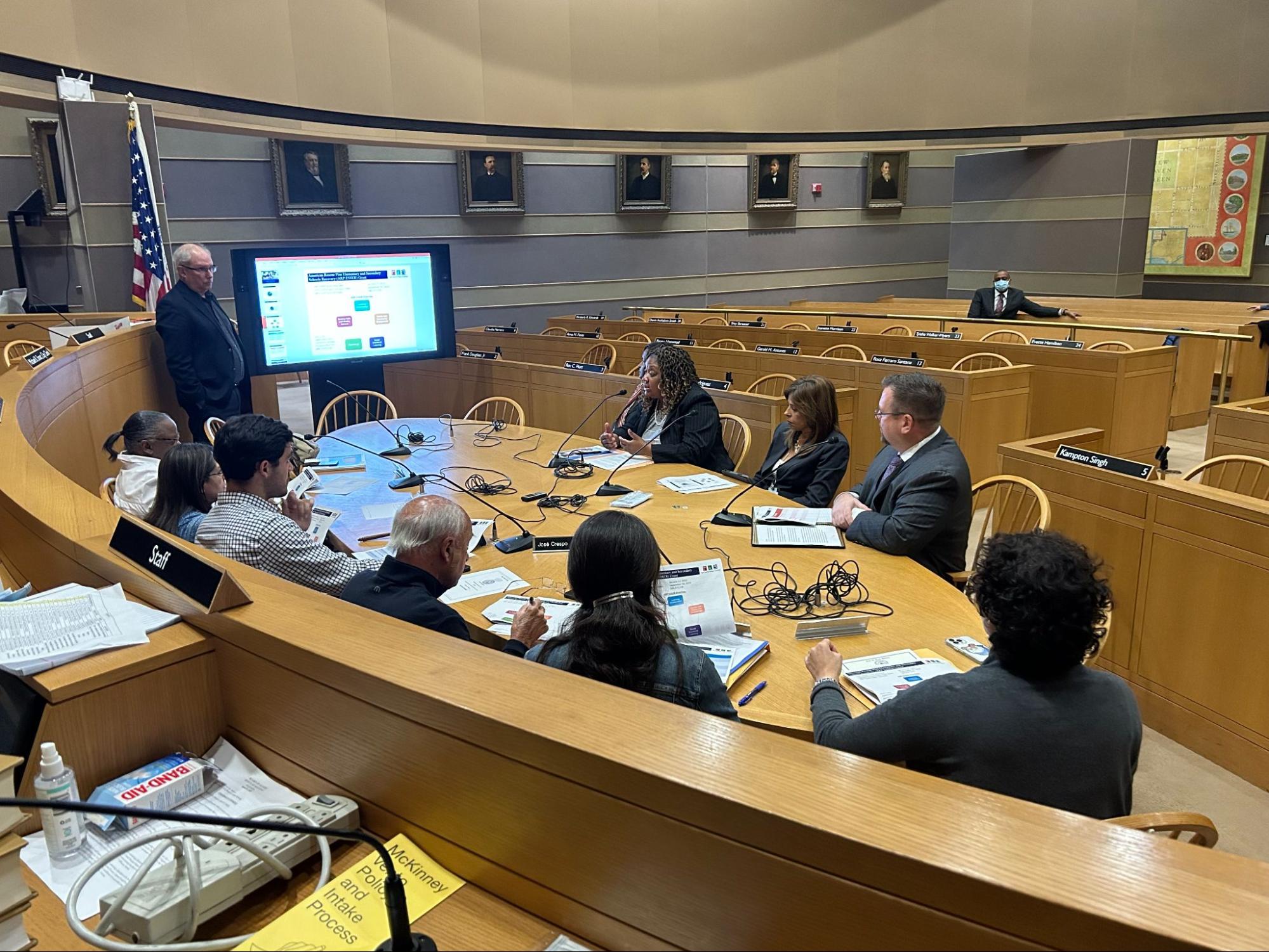New Haven Public School administrators discuss district priorities as federal funding end nears
City alders on the Education Committee met with New Haven Public School leaders to review how the district plans to spend a remaining $42.9 million in federal Elementary and Secondary School Emergency Relief funding.

Gryffin Wilkens-Plumley, Contributing Photographer
City alders and New Haven Public School administrators met Wednesday evening to discuss the how the city’s schools have made use of major federal funds for education.
New Haven Public School administrators — including NHPS Superintendent Madeline Negrón, Assistant Superintendent Keisha Redd-Hannans and Chief Operating Officer Thomas Lamb — began the meeting with a presentation, which began by explained how the district has thus far used $37 million of Elementary and Secondary School Emergency Relief funds ESSER funding, which was part of the American Rescue Plan Act, included a three-round set of stimulus grants from the federal government to public school systems across the country.
NHPS received $80,017,233 in the third round of funding; now, the district has one year to spend the remaining $42.9 million before ir expires.
“We cannot continue to say to folks, yes, what we have today is going to be there tomorrow,” Negrón said in the meeting.
Redd-Hannans said the district has primarily focused ESSER support on increasing parent participation and on funding dual enrollment classes for students. She also noted that NHPS has hired additional teachers — particularly bilingual ones — with the aim of decreasing class sizes.
While the district has long hired bilingual teachers, especially to meet the needs of new students, administrators are looking to do more, Negrón said. She floated a proposal for a dedicated “Newcomers Academy,” meant to support new students in attaining English proficiency while also encouraging them to retain knowledge of their primary languages.
“One thing in particular [to note is that] we just added a new K-5 core curriculum,” Redd-Hannans said. “But we’ve also added, over the last two years, a new curriculum K-8 in mathematics [and in] science, out of our ESSER funds.”
Other investments, according to Redd-Hannans, included hiring additional school counselors, social workers and school psychologists.
Lamb, chief operating officer of the district, said NHPS has also been using ESSER funds for infrastructure improvements. He noted that, although NHPS dedicated $6.7 million in ESSER funds specifically towards HVAC improvements, the money did not address the long-term sustainability of the district’s air conditioning needs.
“When I joined the school district a little over two years ago the district facilities teams … lacking resources, often ran systems directly to failure, and in many cases continue to do so,” Lamb said. “[We] have been working toward a time-based preventative maintenance approach that captures the needs of all school buildings systems. Such an approach requires larger monetary investment.”
According to Lamb, the cost of replacing the HVAC system of one school would be around $1 million. He claimed that 60 percent of the district’s 41 schools have systems older than or approaching 20 years.
Negrón also emphisized the HVAC issue NHPS are facing, referencing early closures at the beginning of the year due to high temperatures as a heat wave gripped New Haven.
“The safety of our kids and our staff has to come first,” Negrón said. “I know the impact that it has, whenever we have to shorten a day, because it does have an impact on our families. That was a hard decision to make… But when you have a situation where a school is working on only one chiller and the one that you have in that school is failing, you are at a point where people are literally suffocating in buildings.”
The New Haven Public Schools budget for the 2018-2019 school year was $364,659,346.







